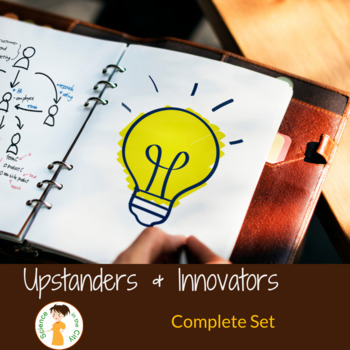How Can We Attract Students To STEM?
Note: This is a guest post for Science in the City. Author Bio is listed at the bottom
Today’s generation of teachers know the value and importance of STEM education, as society continues to need people with skills in science, technology, engineering and math. Many teachers are acting as mentors for their student’s specific interests – educating them on STEM-related role models in current times and throughout history.
However, establishing role models in the STEM world is beneficial, but not always enough. One female-graduate STEM student commented that Jane Goodall had always been her role model, but she never met Goodall. The student says that in her opinion, real-life mentors are more important than role models.
Articles on how-to-teach-STEM appear almost daily in journals designed to help teachers reach students who express little or no interest in those subjects. To meet this challenge, educators are becoming aware that it takes more than reading chapters in a book or filling in blanks on worksheets. So how can teachers – with the help of those outside of the classroom - encourage the next generation to consider pursuing a STEM-related education and career?

Stimulate and Encourage Curiosity
Students of all ages must be encouraged to ask “why” questions. Give students the opportunity to taste, smell, touch and watch. Provide them with items to play with and analyze. As one teacher stated, “We must simply give them the resources that feed their curiosity. Growing fruits and vegetables in a garden, building forts, and playing with blocks can all be uniquely valuable.”
Toddlers who play with blocks and build forts increase their spatial abilities. Hands-on learning opportunities, such as puzzles or cooking in the kitchen, can drive a young person’s life-long interest in a subject.
Provide Real-Life Exploration Activities
Most adults recall their elementary school science project of creating an erupting volcano out of ordinary household items. The thrill of experiencing the result of a hands-on project stays with them for a lifetime.
A few years ago, the Massachusetts state education department implemented a “Got Math” program as an experiment for elementary and middle school students using real-life situations to learn the importance of developing their math skills. For example:
- Students met with local businesses that taught them how to shop with coupons to reduce the cost of their purchases.
- Students visited with architects who taught them how to use measurement and problem-solving techniques to design and build a foam model house to scale.
Other examples of real-life exploration activities include:
- Young students experiment with objects to learn why some float and some sink.
- Older students may watch crime-solving television programs and learn how the use of science techniques help solve crimes.
There is really no limit to how students can learn through experimentation.
Role Models, Industry Leaders and Mentors
Exposing students to role models and industry leaders is a good thing. They learn about the success of anthropologist Jane Goodall, engineer and entrepreneur Elon Musk, Bill Nye the Science Guy, Bill Gates of Microsoft fame, astronauts and NASA scientists, and other famous people. Students can see how they can similarly use STEM education in their lives.
Active mentors who guide students, and who can see the world the way their students see it, are priceless. Mentors are known for igniting their students’ life-long passion for succeeding in their chosen STEM field.
Introduce Students to STEM Jobs
STEM jobs pay well. According to one report, in 2018, the median earnings in the country for all non-stem jobs was $19.30 per hour. For STEM jobs, the pay averaged $38.85 an hour. As STEM talent becomes harder to find, the pay will only increase. Plus, it is expected that there will be more STEM-related jobs every year. As of 2019, there were approximately 2.4 million vacant STEM jobs in the country. Showing students these jobs can provide a financially bright future may entice them to pursue a career in that direction.
What are some examples of STEM careers? Below are a few examples you can provide to students:
- Creation and improvement of cellphones, computers, tablets and videogames
- Cybersecurity
- Anything to do with artificial intelligence
- Manufacturer
- Engineer
- Geologist
- Paleontologist
- Volcanologist
- Archeologist
- Anthropologist
And as STEM- related fields keep expanding due to innovation there will be jobs available in areas not yet even known.
Educators who capitalize on the innate curiosity of children — and who give them the hands-on experiences they need to encourage exploration and inquisitiveness — can find a classroom full of motivated learners. The long-term results may be college students pursuing their dream of finding a well-paying STEM career. Society, in general, will also likely progress as STEM education will help lead it in that direction.

Author bio:
Chris Hobbs has more than 25 years of manufacturing experience in various hands-on and managerial roles such as machine builder, reliability engineer, maintenance technician, maintenance management, consulting, and more. Chris is currently the Technical Training Program Manager at
Advanced Technology Services where he oversees the SkillPoint™ program comprised of electronic and mechanical courses to improve technicians’ skillsets and meet the needs of modern manufacturing.












